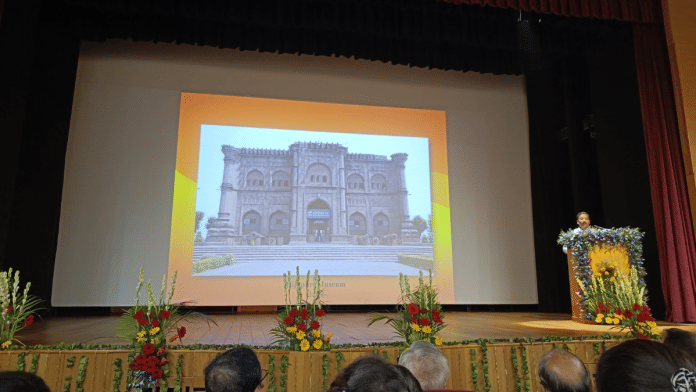New Delhi: India is not a museum-going country in general. But there is a particular type of museum that gets the least number of visitors. They are called site museums, built alongside archaeological excavations.
Retired archaeologist and museologist Rajeev Dwivedi said most of these site museums of the Archaeological Survey of India (ASI) have been built very hurriedly.
“This is a very sad thing for the museums. They have been made in haste. This will only stop when priority is given to collection of antiquities,” he said.
Speaking at the monthly lecture titled ‘Commissioning of Site Museums in India’ at New Delhi’s National Museum, Dwivedi said that most of the site museums that were earlier known as local museums have been built at the site of monuments. He said this is not the right way to build museums.
He also emphasised that to design a museum, professionally trained museologists are a must because they keep a collection of antiquities in mind.
“[The] administrative structure of government institutions does not allow creative freedom. In making a museum, the administration has been more involved rather than museum experts,” said Dwivedi.
He said if a museum is built according to the need of the collection of antiquities, there will be a new life in it.
Dwivedi has served at various site museums, including Vaishali, Bihar. Among the audience were director general of National Museum BR Mani, UPSC museum consultant VK Mathur, and archaeology students.
The use of the term ‘site museum’ began in the 1940s, he said, adding that they are different from district, state, and national museums.
“Other museums are city-oriented, but site museums are mostly located in rural areas,” said Dwivedi.
Also read: A Bengali play robs Gandhi of the Mahatma tag. Reveals the dark side of idealism
‘Museums built at the wrong places’
Dwivedi built four museums, including two for the army. Others are Kapilavastu Museum in eastern Uttar Pradesh and Lalitgiri Museum in Odisha.
He recalled how in building the Kapilavastu museum, he was put under pressure from the Prime Minister’s Office, local MP, and state government. Earlier, a state government building stood at the site. To build the museum, Dwivedi had to navigate the complex web of bureaucracy, meeting several secretaries in the UP government. Three of them changed during his pursuit, but he remained resolute. After a long wait, the UP government handed over the building to the ASI.
But the area is prone to heavy rains, being in proximity to Nepal. In one of the photos of the Kapilavastu museum, the building appears entirely waterlogged.
Dwivedi also spoke about infrastructural struggles while building the Lalitgiri museum.
“The bedrooms are bigger than the size of its gallery,” said Dwivedi. Lalitgiri is a Buddhist site that was inhabited from 2nd century to 13th century BC.
Choosing the right location is very important, according to the museologist. “The site museum should not be too close to the site. And it should not be too far away that it loses its importance,” he said, adding that many museum buildings have been built at the wrong place.
Dwivedi said artefacts in such museums should be presented in such a way that they give information about the entire site like an excavation report.
“Unfortunately, this happens very rarely,” he said.
Journey through vandalism
The former archaeologist gave a nugget of history, mentioning that when excavations took place during the British rule under the leadership of Alexander Cunningham, antiquities were distributed to all the big museums like Lucknow’s State Museum, Central Museum of Nagpur, and Government Museum of Chennai.
Under Cunningham, two site museums were built — Mathura museum in 1874 and Bijapur museum in 1892. “Transporting valuable artefacts from archaeological sites to urban museums left site museums vulnerable,” said Dwivedi.
But things changed when John Marshall, who pioneered the concept of site museums, became director general of ASI in 1902.
Dwivedi said Marshall set up the Sarnath Museum in 1910, Agra’s Taj Museum in 1906, Khajuraho’s Archaeological Museum in 1910, Nalanda Archaeological Museum in 1917, and Sanchi’s Archaeological Museum in 1919.
Today, he said, site museums face new challenges — lack of expertise, conservators and conservation labs, and dwindling footfall.
(Edited by Humra Laeeq)






